THE GREEN LINE
ORIGINAL STORY
How to set up a PWYC market: Tips from Moss Park’s unique model
The Green Line team visited Moss Park Market to learn how its pay-what-you-can model helps locals afford healthy, good-quality food.
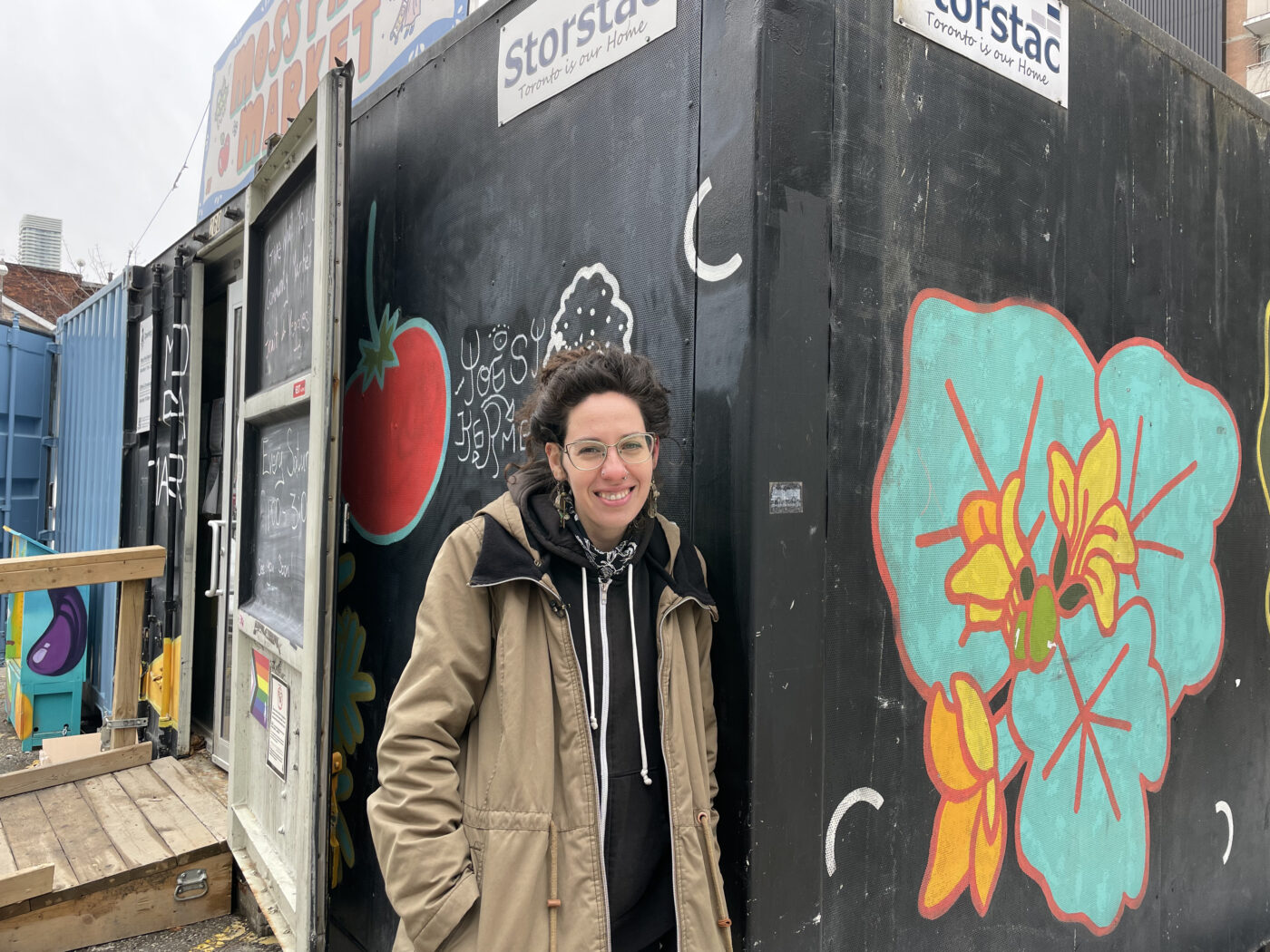
Ella Lightstone, food programs manager at Moss Park Market, stands in front of the shipping container at 260 Queen St. E. where the market is held every Saturday from 11 a.m. to 3 p.m.


Amanda Seraphina James Rajakumar
Indian immigrant with a post-grad in journalism from Centennial College. Now living in Grange Park, meeting new people, and hearing different stories. Has four names, so it’s a pick-your-player situation.
March 21, 2025
SETTING UP A MARKET 101
- Define your market area. By creating a catchment area for the market, it ensures that high-quality food reaches those in need in the neighbourhood, and supply doesn’t run out.
- Acquire a space in the neighbourhood that’s accessible for all residents.
- Apply for government grants, get donations from residents and set up a pay-what-you-can model at the market.
- Partner with food organizations for fresh produce. Moss Park Market uses its own community garden and also partners with Second Harvest, FoodShare, Bondi Produce, Broadfork, Not Far From the Tree and Metropolitan Urban Rooftop Farm.
- Build community through fun initiatives such as “Coffee and Conversations.” In the summertime, Moss Park Market also plays music and provides games outside for residents.
Buying groceries isn’t cheap.
You can walk into a grocery store with $10 and walk out with just milk and eggs — but, that’s not enough for a healthy meal.
So, one innovative market in Moss Park is helping residents eat well and affordably through its unique market model.
Moss Park, which locals call “crunchy” — meaning rough or “a little pocket with high need” — is lined with shelters, social services and social housing. The City of Toronto’s latest census shows that the downtown Toronto neighbourhood has a higher percentage of low-income earners compared to the rest of the city.
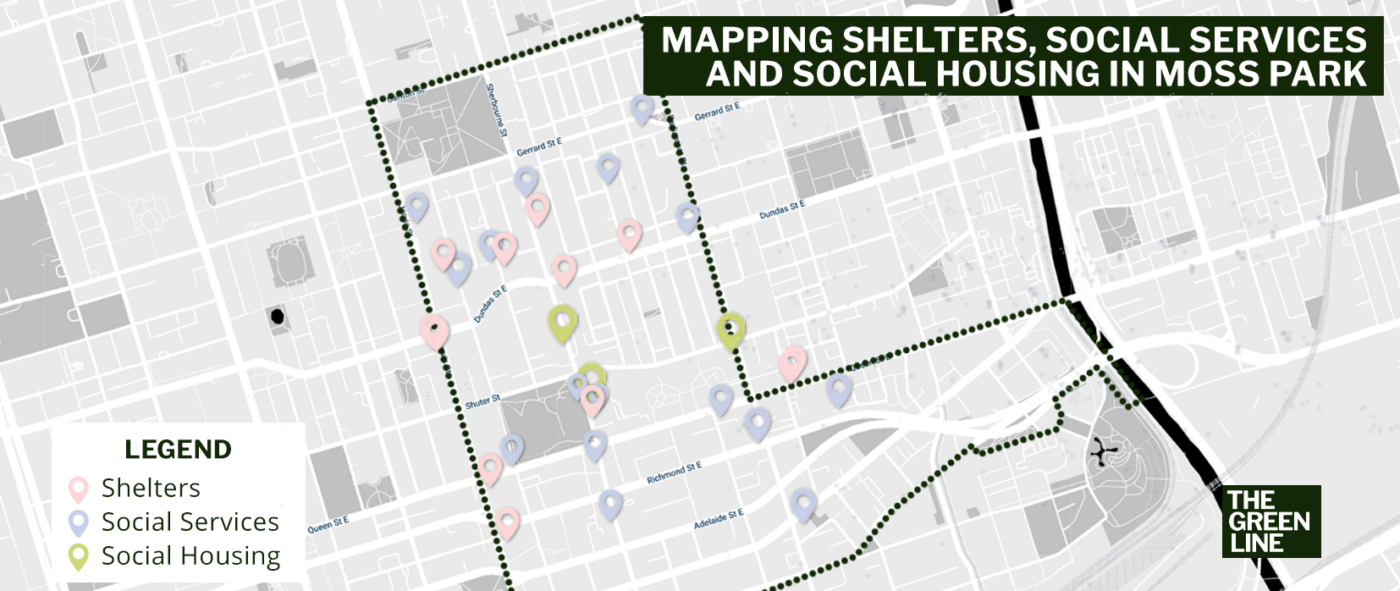
A map of Moss Park showing all the shelters, social services and social housing in the neighbourhood.

So, how do residents buy groceries that fit their budget? One way is through the Moss Park Market. Run by social venture Building Roots, the market has a unique pay-what-you-can model. Unlike food banks, which hand out a select bag of groceries, the market allows residents to pick produce that they like and pay what's possible.
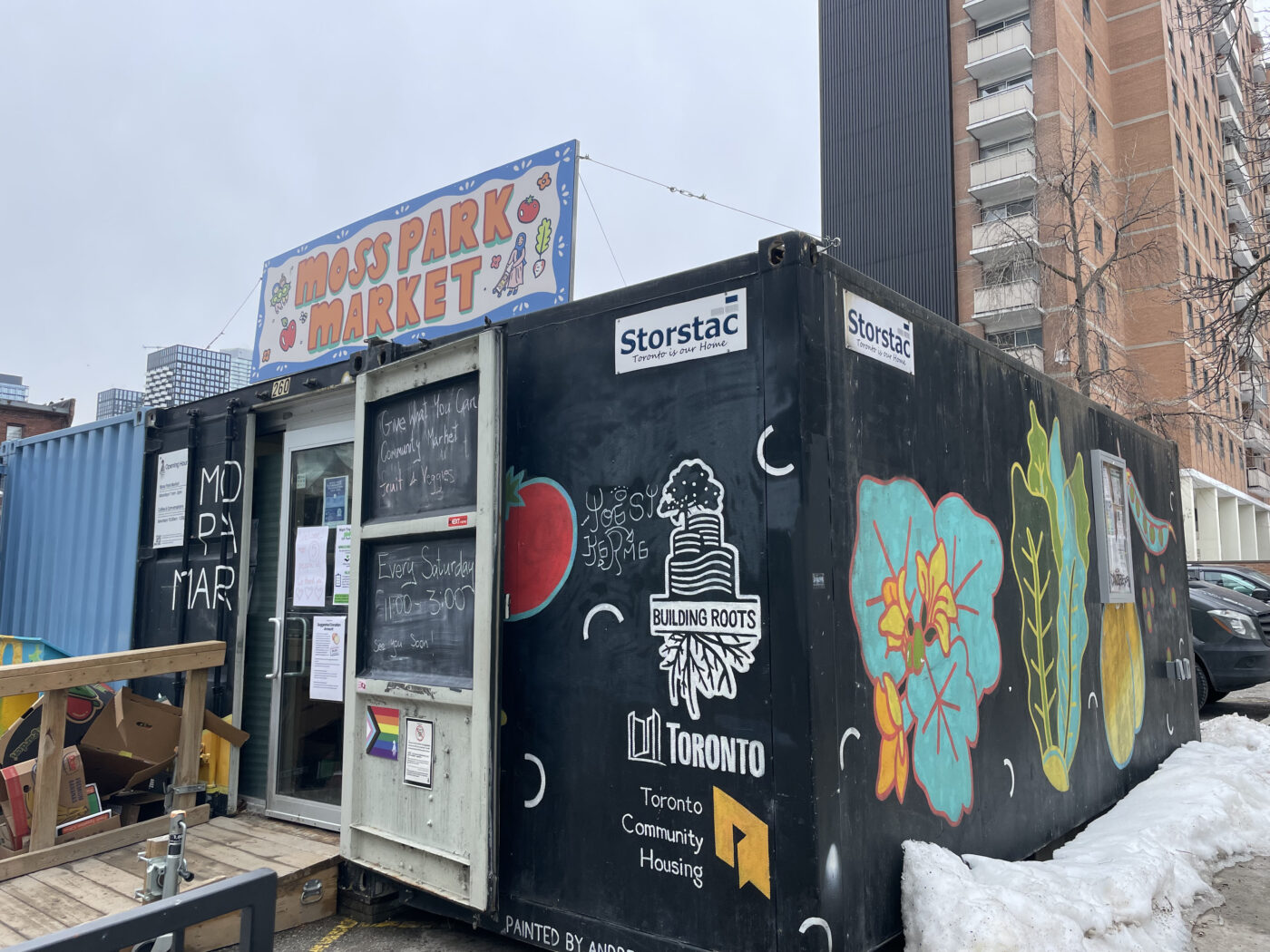
Moss Park Market, located at 260 Queen St. E., is a pay-what-you-can market set up inside a shipping container.

Chris Little, who works in Moss Park says, “I can't afford [groceries] and it's crazy, really. I mean, the basic, unprocessed food is very expensive, and that's the healthiest [kind that] you want to eat, [but] it's out of affordability for most people, I think, especially around this neighbourhood.”
Meanwhile, Moss Park resident Julio Naval Baron adds, “What I complain about is mostly the prices. Everything is going up, up. Then, the next day you go to the supermarket and you realize the prices have gone up again — and it's crazy.”
Ella Lightstone, food programs manager at Moss Park Market, says the neighbourhood is small, diverse and has a high need.
The market is a focal point in the neighbourhood, she adds, saying that people stop by throughout the day, whether it’s to get a sandwich, access harm reduction supplies or just warm up.
"Food security is what I do, but Building Roots supports the community in other ways as well. The market is like the thing — it's big, it's busy, it's exciting,” she explains. “But the other things, like those quiet and caring moments that we have every single week, are more important.”

Volunteers create fruit and vegetable baskets inside Moss Park Market, which is open from 11 a.m. to 3 p.m. every Saturday.

The market's catchment area is specifically Moss Park. First-time visitors are asked to sign up with their name and address to get a membership card, which allows residents to shop. The market ensures locals have access to fresh and healthy food through produce that comes from their own community garden and partner organizations.

Set up in spring 2024, the Moss Park Community Garden offers fresh produce for the Moss Park Market.

Muhammad Ahsen Bhatti, a volunteer who’s been a part of the Moss Park Market for four years, says prices for groceries have gone up across the board, and having access to high quality daily essentials is important for people to function. “People can't go about their daily lives. They can't work, they can't go to school or anything if they aren't able to be healthy and lead healthy lives,” he explains.
Bhatti adds that two of the biggest problems Moss Park residents face when it comes to groceries are rising costs and a lack of time to cook a healthy meal. In response, the market also provides meals by setting up a table called “Coffee and Conversations,” where residents are served coffee, baked goods, sandwiches and more.
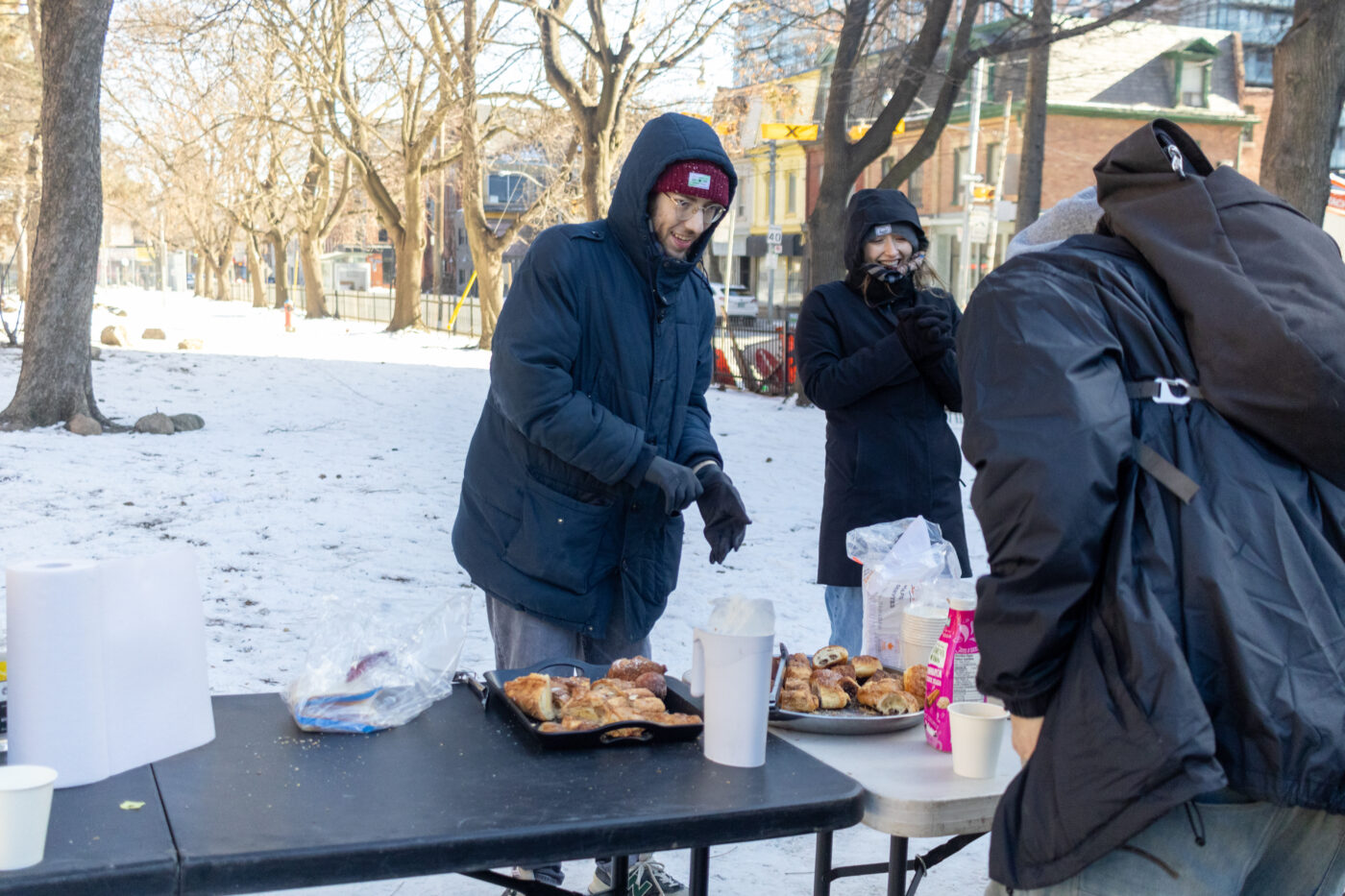
Volunteers at Moss Park Market set up the “Coffee and Conversations” table outside the market at Queen Street East and Ontario Street.

Eight years ago, a dozen eggs in Ontario cost under $3; today, that same dozen costs nearly $5, according to Statistics Canada.
A report by CivicAction and Boston Consulting Group released this month shows that 51 per cent of new food bank users come from households with at least one person employed, suggesting that food insecurity impacts everyone, not just the jobless.

Graphic showing the increase in cost of a dozen eggs in Ontario over the past eight years, according to Statistics Canada.

The Moss Park Market currently runs on earnings from the market, donations from residents and government grants. As of 2024, the market’s funding was 1 per cent corporate funds, 6 per cent individual donations, 8 per cent government grants and 85 per cent foundation donations.
But Lightstone says community funding would be the most sustainable way of running it in the long term. She also wants the market to offer economic opportunities for residents by providing a space where they can sell their own crafts and food.
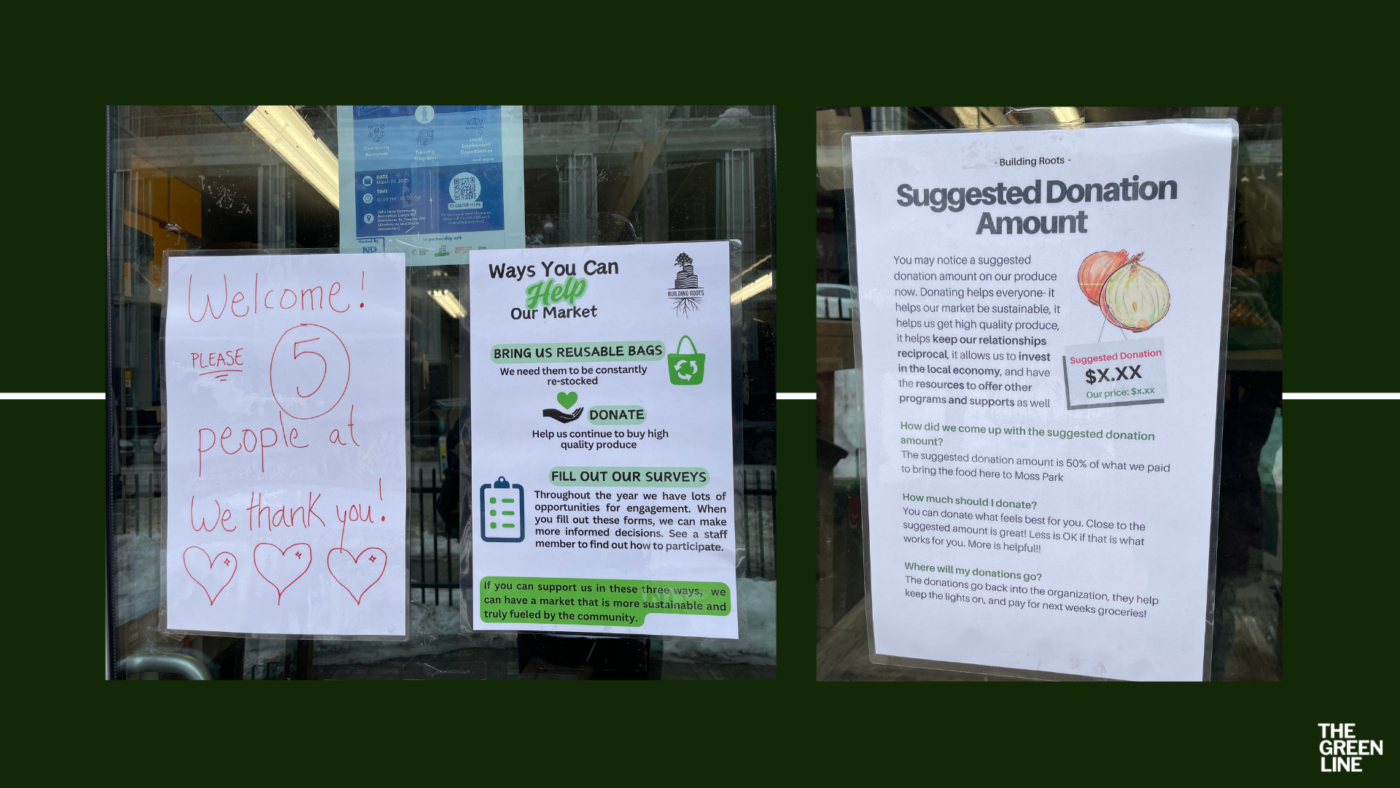
Signs on Moss Park Market’s front door that help residents understand how the market functions.

Fact-Check Yourself
Sources and
further reading
Don't take our word for it —
check our sources for yourself.
Here's your chance to support the only independent, hyperlocal news outlet dedicated to serving gen Zs, millennials and other underserved communities in Toronto. Donate now to support The Green Line.